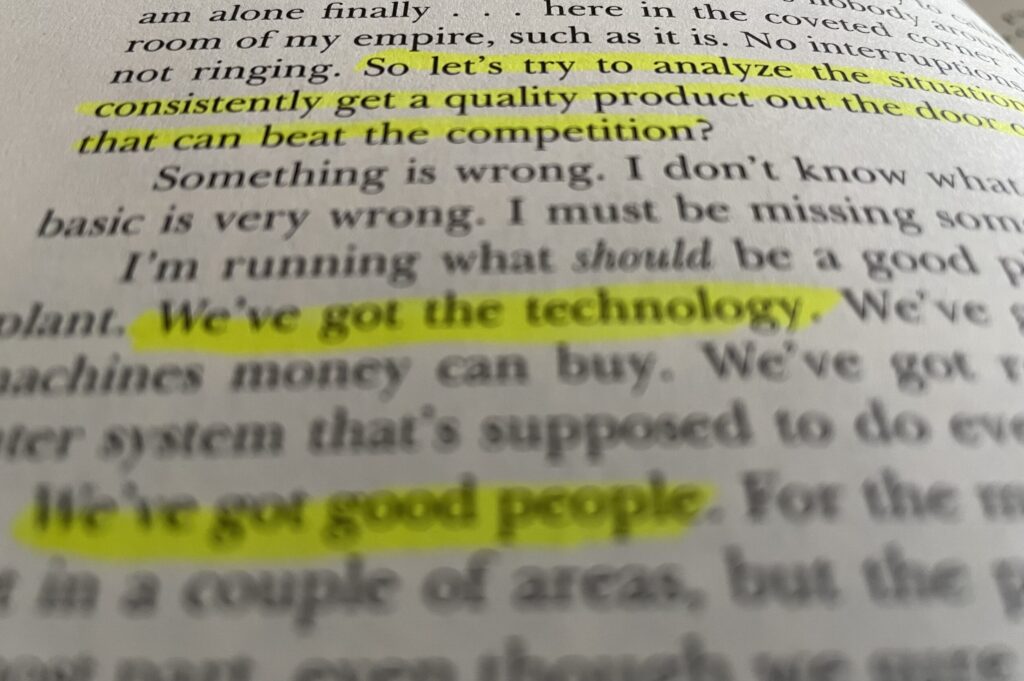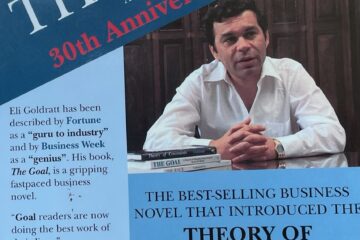The Goal by Eliyahu M. Goldratt and Jeff Cox (1984)
In Chapter 2 we are introduced to:
Julie Rogo – The Wifey, aka Bae, Alex Rogo’s better half.
The Japanese – Unico’s biggest threat to business survival.
Chapter 2 Review
Chapter 2 is a deeper dive into the family and organizational dynamics that make up Alex Rogo’s day to day life. We can see very quickly that Rogo’s main issue at this point in the book isn’t a faulty workflow or avoiding a dog with bees in it’s mouth which every time it barks, it shoots bees at you.
It’s his priorities.
I don’t want to lose anybody. Alex Rogo’s journey in The Goal IS to learn Lean.. and let’s toast to that, but hey.. let’s also get this guy a couple of communications books and a seminar on love languages on his personal calendar! Our dude is messing up all kinds of ways.
As the story continues, Rogo ultimately decides his best move going forward if I’m understanding this correctly, is to leave his, already dressed and hair did wife at home to eat a Marie Callender pot pie dinner. Return back to work, cape in hand, Gantt chart in the back pocket, and valiantly and triumphantly, save the day and keep everyone’s jobs. That’s questionable.. but Goldratt is trying to make a point.
With everyone on the team pitching in, the company is able to pull off a miracle to get the product out the receiving door and to market. Hooray! However, it cost the business significant time, morale, work/life sacrifices, and pushing the team beyond capacity to achieve it. And your wife had a pot pie for dinner.
A pot pie.
Can that Mr. Rogo… really be considered a win?
And as we see on page 18, Rogo would agree with you over a frosty beer. This is not winning. It’s super-heroism, it’s mamba mentality, and it’s unsustainable.

They have the people, they have the technology. Everyone has a MBA and knows Project Management. Everyone is going hard in the paint every day, and yet it seems
“they.. just… can not work efficiently.”
How they resolve this situation and defeat an organization in Japan that is better at doing everything they do in every way? Well, we will find out as the pages turn. But in the meantime, let’s wrap this review up going back to what I think is a crucial lesson learned from Chapter 2, and that was the dynamic between the Rogo’s and the value of relationship building.

Goldratt within Chapter 2 invested a good piece of his time on work life. It showed to the reader, that Alex Rogo’s first step should have been to do a full stop when it came to solving this problem and remember the why behind his work. Let’s think on this for a second, what good is winning if you burn down every bridge, support channel, friend, and partner that you have to get there?
We as leaders must remember the cautionary tale between the Rogo’s to see that although it is good to win, there has to be a level of sensibility in the game plan. I hope that as we continue into this book, the story between the Rogo’s will improve (which I think it will) but seeing how he gets there will be an interesting journey.
